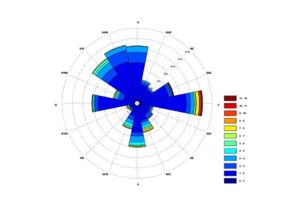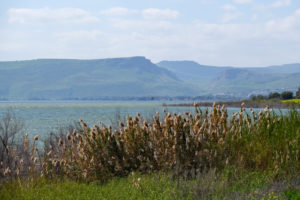This article is a continuation of my previous article, “The Sea of Galilee and Its Climate.”
Jesus was well aware of the weather conditions at the Sea of Galilee because he lived for three years in the shore town of Capernaum. As narrated by Saint Luke (12:54-59), Jesus said to the people, “When you see a cloud rising in the west you say immediately that it is going to rain—and so it does; and when you notice that the wind is blowing from the south you say that it is going to be hot—and so it is”; also, in Saint Matthew (16:1-3), it is written: “The Pharisees and Sadducees came and, to test him, asked him to show them a sign from heaven. He said to them in reply; In the evening you say, “Tomorrow will be fair, for the sky is”; and, in the morning, “Today will be stormy, for the sky is red and threatening”; You know how to judge the appearance of the sky, but you cannot judge the signs of the times?” In this article, we will describe some aspects of the winds at the Sea of Galilee.
The Winds at the Sea of Galilee Today
In explaining these winds, let us assume that the current winds are probably similar to those at the time of Jesus. To understand them, we have represented them using the current meteorological data from the station in Capernaum, provided by the Government of Israel (http://ims.data.gov.il/, years 2000 to 2005 included, for two daily data points). This representation is known as a Compass Rose. It is comprehensive and visual, as it includes the wind direction, intensity or speed, and frequency. To understand the representation, it is important to know that it shows the direction from which the wind is coming, indicated by letters representing different directions. For example, in the quadrant between North (N) and East (E), we find winds coming from North-northeast (NNE), Northeast (NE), and East-northeast (ENE). In each direction, different colors indicate the wind speed in meters per second. The concentric circles represent the frequency of that wind as a percentage of the total (Figure 1).
Let’s proceed to the analysis and explanation of the data. It can be observed that the most frequent winds come from the East (a little over 12%). They typically prevail from February to June and are warm winds.

Fig 1. Compass Rose Sea of Galilee (Capernaum Station, years 2000 to 2005, daily data points at 8 and 20 h, http://ims.data.gov.il)
The winds from the West and Southwest are also very frequent, bringing moisture from the Mediterranean and bringing rainfall during winter when the clouds reach the mountainous region. They prevail from November to February.
The winds from the North are also quite common. These winds are cold as they come from Mount Hermon. During the summer, the Northwest winds are typical, not causing rain and mitigating the intense summer heat. The Southern winds are warmer as they come from the desert. These winds occur mainly in spring and bring a thin layer of sand that settles on the plants, creating a dust cloud in the sky. It is a challenging wind for people as it never brings rain, and it is scorching.
This graph representing current data reflects winds that seem to have not substantially changed since the time of Jesus. It still rains in winter when the clouds come from the West, strong East winds are frequent in spring, hot days with Southern winds also occur during this season, and the typical Northern summer winds are somewhat cooler. In few places around the world, can one observe, as happens in the Sea of Galilee, that the main winds follow the exact direction of the four cardinal points, thus forming a cross; this is something similar to churches around the world that are pointed towards the East and shaped like a cross, symbolizing the presence of Jesus in many cities and towns worldwide.
Father Alfonso Sánchez de Lamadrid Rey

Sea of Galilee photo by Pierre Girardot
